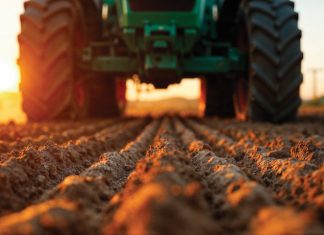The barley industry contributes significantly to the South African agricultural sector, with barley being the most important small grain after wheat. The Southern and Northern Cape account for most of the local production, under dryland and irrigation respectively. Most of the barley produced locally is used by the beer-brewing industry. But before brewing can take place, the barley needs to be malted.
SA Graan/Grain visited the SAB malting plant in Caledon to experience first-hand what the process entails.
Malting
Brewing is the process used to make beer and malt is the main ingredient. Malting is the conversion of raw grain into malt by drying partially germinated grains. The objective of malting is to produce a limited, uniformly germinated grain of malt under precisely controlled conditions. Malt should be a friable package of husk, starch, proteins, flavour precursors and nutrients along with a balanced supply of enzymes. It must be easy to mill and the internal structure of the barley should be broken down to make starch available, with enzymes for use in the brewhouse.
In order to produce good quality malt, the ‘perfect’ barley grain must be: uniform in size and colour; free from smell, mould growth and insects; not mixed with other cereals or barley varieties; and capable of growing with a germinative capacity of more than 95%. It should have no split-skinned or pre-germinated grains; moisture for storage at 12%; and a total nitrogen content of less than 1,8%.
The level of nitrogen has a link to the amount of free amino nitrogen (FAN) that will be available in the malt for brewing. However, there is also a direct link to how easily water uptake happens in the grain. Too high a nitrogen level creates problems for hydration in the grain and results in grains which are partially unmodified or wholly unmodified … which have an extremely negative effect on brewing.
Although other sources such as oats, wheat, rye and sorghum can also be used for malting, barley is the preferred choice.

Why use malted barley?
The structure and enzymes are easily broken down from starches into fermentable sugars, with readily available enzymes for mashing and fermentation.
Barley has a natural colour and taste that are formed from the kernel. The FAN that is naturally available in the kernel, assists with fermentation. It is easy to brew, easy to modify and to transport. It has a long storability and is stable when the malt is kept at the right temperature and moisture.
The process
Processing at a malting plant is divided into two parts: dry-side and wet-side operations. After the barley arrives from the agribusinesses via road or rail, it is pre-cleaned.
Barley is taken in at 12% moisture and the incoming quality is measured. During precleaning all stones and stalks larger than 14 mm in size are screened out, after which the grain is stored in the silos. During the main clean, stones, third-grade and foreign matter are removed.
Then it is time for steeping, the first step in the wet-side operation.
Pre-steeping, which is variety-dependent, is followed by the main steep which takes 36 to 40 hours. Here the barley is hydrated from 12% to 46% moisture and the temperature is maintained between 15 and 17 °C.
After steeping comes the germination process. Cell walls are broken down to expose the starch and proteins to enzyme activity. The synthesis and release of enzymes are used to convert the starch to fermentable sugars. Rootlet growth takes place as the barley kernels sprout, and the cool and moist environment in the germination vessels is maintained by blowing cool, humidified air through it. Germination takes 76 to 84 hours.
Next, the green malt is kilned. The drying process is used to arrest enzymatic activity for the brewers to use later. The moisture is reduced from 45% to less than 5,4% so that the malted barley can be safely stored, transported and easily milled. The colour and flavour are determined at this point, and the kilning process has a direct effect on the colour and taste/aroma of the beer to be produced.
This complex and carefully controlled process is a crucial step in producing beer – a favourite South African beverage.
Thanks to Lauren Steytler from SAB Caledon Maltings for supplying information and a tour of the plant.



















